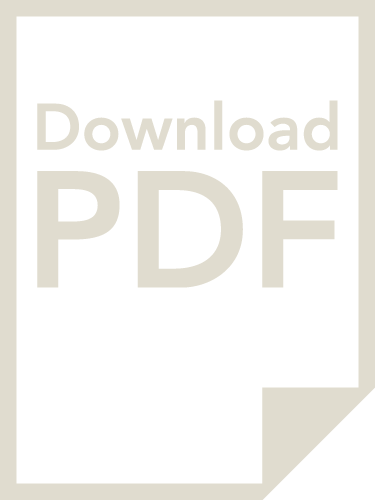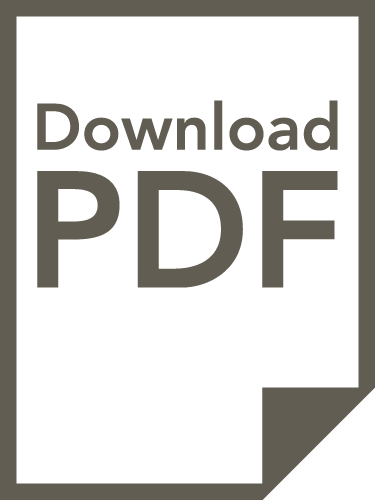Relationships for Learning
By Linda O’Toole & Jean Gordon
1. Why Relationships for Learning?
Welcome to the second issue of the Learning for Well-being Magazine. Edited by the Universal Education Foundation, the purpose is to enliven and deepen the understanding of L4WB through presenting projects, initiatives or experiences which illustrate the principles; sharing and discussing related research and insights; reflecting critically on policy implications; and contributing to tools for professionals’ development. Each issue of the magazine centres on a theme of interest to the L4WB community and we solicit authors from a range of sectors with differing perspectives on the theme. Our aim is for a lively and engaging magazine of interest to a broad range of readers, including professionals working in different sectors, interested academics and researchers, international experts and government officials.

Issue 2 focuses on 'Relationships for Learning'. Learning for Well-being (L4WB) emphasises the importance of the quality of relationships in all our endeavours. In this issue we will bring together articles and reflection pieces that explore many facets in relation to people of all age-groups. Since learning takes place across all our experiences, we are including a focus on relationships for learning outside of traditional education – including health settings, adult education, primary school classrooms, anti-poverty networks, juvenile offenders, parenting in war zones, social inclusion policy and research, corporations, Child Rights and participation programmes.
Specifically we are interested in exploring relationships and how they shape the way we see and experience the world, including one's relationship to self, to others and to the wider environment at different stages in life and in different settings. It is easy to put forward the quality of relationships as essential to learning but it is less easy to be explicit about how this works. One thread in the issue looks at what research tells us about the role of relationships in learning and the types of processes, skills and capacities that support it. A second thread explores different types of relationships, including building networks, partnerships and communities of professionals or practice. However, the overarching thread that connects all the articles is an implicit emphasis on what L4WB refers to as 'competent partnerships' which are at the heart of relationships that contribute to enhancing the quality of learning.
The term competent partnerships is used by L4WB to describe a mutuality of respect, interest in collaborative engagement, and an openness to learning from one another. It highlights relationships that are generative, in the sense that all those involved are changed/impacted by the interaction in positive ways; that new possibilities, new actions or attitudes are generated as a result of the relationship. We are neurologically designed, as humans, to interact with others, and to learn primarily through our relationships. This occurs not only through our direct relationships with others, but also as observers of those around us. In particular, adults are role models for children and as such have a responsibility to allow and intentionally create relationships based on respect, mutual trust and cooperation. This shift in intergenerational communication and attitudes is critical, but it is equally important that this shift in how we see one another occurs regardless of age, social status, education, circumstances, ethnicity, and so forth.
The quote in the box below illustrates nicely the issue of competent partnerships in terms of the roles of healthcare providers and recipients of healthcare.
Oliver Burkeman interviewing David Pollens:
'Michael Balint … had a question he liked to pose to [to doctors] …It was "What do you think is the most powerful medication you prescribe?' And people would try to answer that, and eventually he'd say: 'the relationship'."
Oliver Burkeman, 'Is it time to get back on the couch?'
The Guardian Weekly, 29.01.16
2. The articles
In this issue we have brought together 9 articles exploring the theme of relationships and learning from very different perspectives. The first four articles look at forms of relationships and then relationships and learning in different settings: two focus on children and one on adults. We then move to a second group of three articles that are specifically focused on the education sector both for children and adults. Our final articles bring in the perspectives of young people in severely difficult and very specific situations (young offenders) and finally partnerships to address complex issues of poverty.
We start this issue with an article by Jon Vogen, (1) Understanding transactional and generative relationships, in which he reflects on different lenses that enable us to understand our relationships. In particular he looks at the continuum from transactional to generative relationships exploring interpersonal interactions and examples of the distinctions between them and the impact of both (transactional and generative) as well as the applications to our own situations and learning. In the second article, (2) A magic recipe for seeing children as competent partners, Maria Paz and Luís Manuel Pinto are interested in the capacities needed by adults and environments to see and relate to children as competent partners. Firstly they take two experiences – one local, ‘Education for Peace’, and one international, ‘CATS’ (Children as Actors for Transforming Society) – of initiatives designed to stimulate children’s agency and participation in environments regulated by adults. Secondly they interview some children in Bolivia and Portugal who are not involved in these programmes about partnership with adults and what they believe is needed for better collaboration. The next article, (3) It sometimes takes a war for parents to relate to their children as competent partners: How Anne Frank’s story resonates in war zones around the world, by Shanti George and Zorica Trikic, with War Child (Netherlands) focuses on how war shatters normalcy. They explore how in exceptional circumstances the hierarchy between parents and children can give way to greater connectedness and mutuality, and children's dependence can become replaced by interdependence between parent and child. The article presents three experiences: Anne Frank, a Jewish teenage girl living in Nazi-occupied Netherlands during the Second World War; the insights of co-author Zorica Trikic, who was the parent of two children during the violent disintegration of the former Yugoslavia in the 1990s; and Omar Munie who fled civil war in his native Somalia at the age of nine and endured several years of separation from his mother before finding a new home and entrepreneurial success in Europe. We then move to the article by Marguerite Guiguet, (4) Relationships in health settings, which focuses on the relationships between adults living with HIV and their healthcare providers. The article discusses aspects related to the communication of health information and the ‘patient–provider’ relationship after presenting a French community-based survey designed by and for women living with HIV – ‘The EVE study’. The study was designed in order to better understand the adverse events experienced by these women. The results illustrate the difficulties encountered in the patient–healthcare provider relationship. It then looks at examples of empowering people living with chronic conditions and education programmes directed towards healthcare professionals to build fruitful communication and relationships so they become a source of mutual and beneficial learning.
The following three articles concern education. The first one by Maja Maksimović, (5) Knowledge that emerges in-between, is set in the adult learning sector. The author is an academic who trains future adult educators. The central question she poses is how to create educational activities that support the self-confidence of learners, built through relationships and creative practice. She underlines that this involves a paradigm shift to knowledge that emerges in-between and through building relationships and invention of new spaces and possibilities as well as the need to be engaged holistically. The article presents some examples of educational activities based on art practices as a way to address this challenge. The following article by Janet Looney, (6) Learning for social cohesion and inclusion, also invokes a paradigm shift. It addresses the need for education, if it is to promote social inclusion for vulnerable groups as priorities, to turn more attention to the key issue of the role of relationships in learning. The author discusses why relationships are so important for learning, referring to evidence from research and how educators and policy-makers can support cohesive learning environments. She finishes by looking at some implications for quality assurance and for educational research. Carmel Cefai and Valeria Cavioni, in their article entitled, (7) Head and Heart for Children’s Education: The role of the classroom teacher, outline the limitations of narrow, neo-liberal views of education focused on the development of a limited range of cognitive abilities and the preparation for the market economy. They then go on to describe why it is important for children to develop social and emotional competences and how these are related to social and emotional development, well-being and academic learning. Finally they describe what classroom teachers can do to promote these competences and conclude with strategies of how teachers can be supported to exercise this role as effective and caring educators.
The next article by Joe Cullen, (8) Why does a rehabilitation programme for young offenders work better when it is founded on a caring environment?, moves to a critical aspect of social inclusion, how youth offenders are treated by current policies and examples of how we can do it better. Firstly, the author presents current policies and programmes, which at their best seek to improve the well-being of young offenders through using techniques re-drafted from behavioural science. He argues they may be well intentioned but are fundamentally misconceived. He then goes on to discuss experimental programmes carried out in the UK in which young offenders are enlisted as ‘co-architects’ of their own futures. Drawing on the evidence from these programmes in youth offending prevention and rehabilitation, Cullen proposes a definition of ‘caring rehabilitation’ that is based on a ‘co-production’ model of rehabilitation. The final article in this issue, (9) Using collective learning to build the trust and alignment needed to solve complex development problems, is written by John Tomlinson about the work of the organisation Synergos; Synergos has engaged for 30 years with partners around the world to solve the complex problems of poverty and its effects by promoting and supporting collaborations among disparate stakeholders. The thrust of this article is the need to work in partnerships across 'silos' if we are to address complex issues effectively. As he points out 'collaboration isn't easy. It requires building trust and alignment among actors who might rarely work with each other, and who might even be in conflict.' The article illustrates the Synergos approach by drawing upon successful collaborative experiences of fighting child undernutrition in India, reducing maternal and child mortality in Namibia, and improving smallholder agriculture in Ethiopia.
Echoing the Synergos approach of bringing together partners from different sectors and interest groups, one of our key objectives in publishing this magazine is to give readers multiple perspectives on the themes selected. In a world where the automatic tendency is to stay within one's familiar (and often comfortable) 'silo', we are delighted to have a space where researchers and practitioners from different fields and sectors can write about their work and experiences for an audience living and working in different countries and circumstances. We hope you enjoy reading this second issue of the Learning for Well-being Magazine and will be very pleased to receive your feedback.



